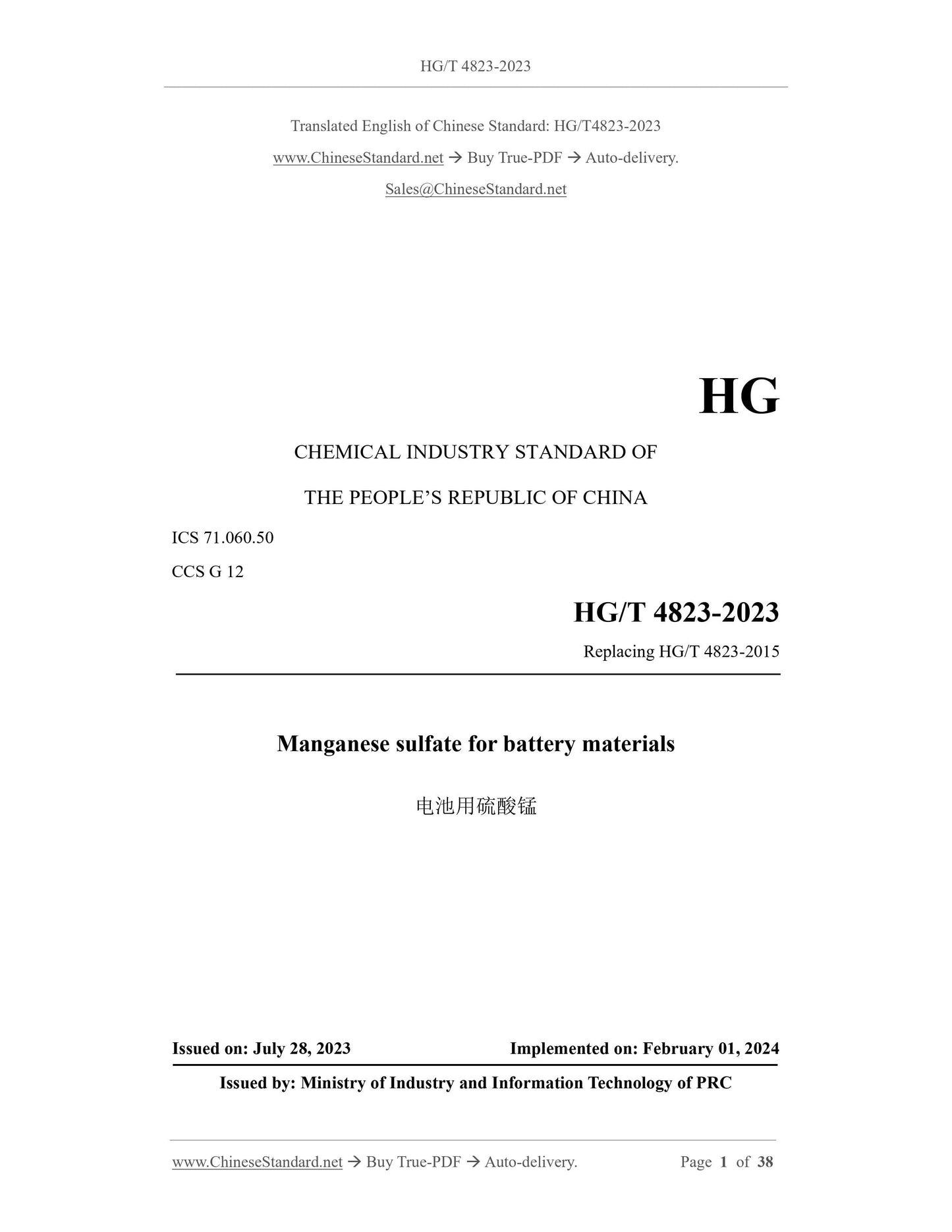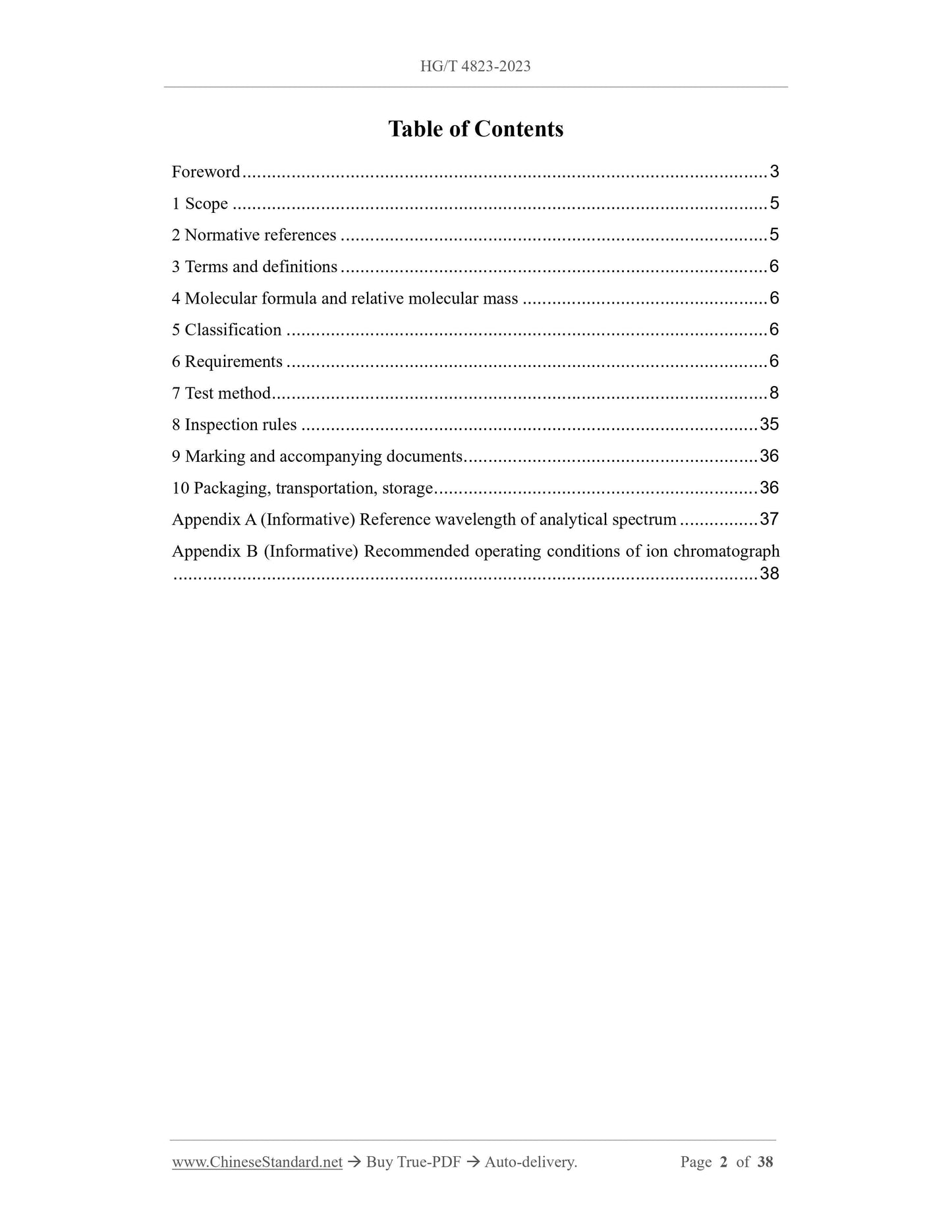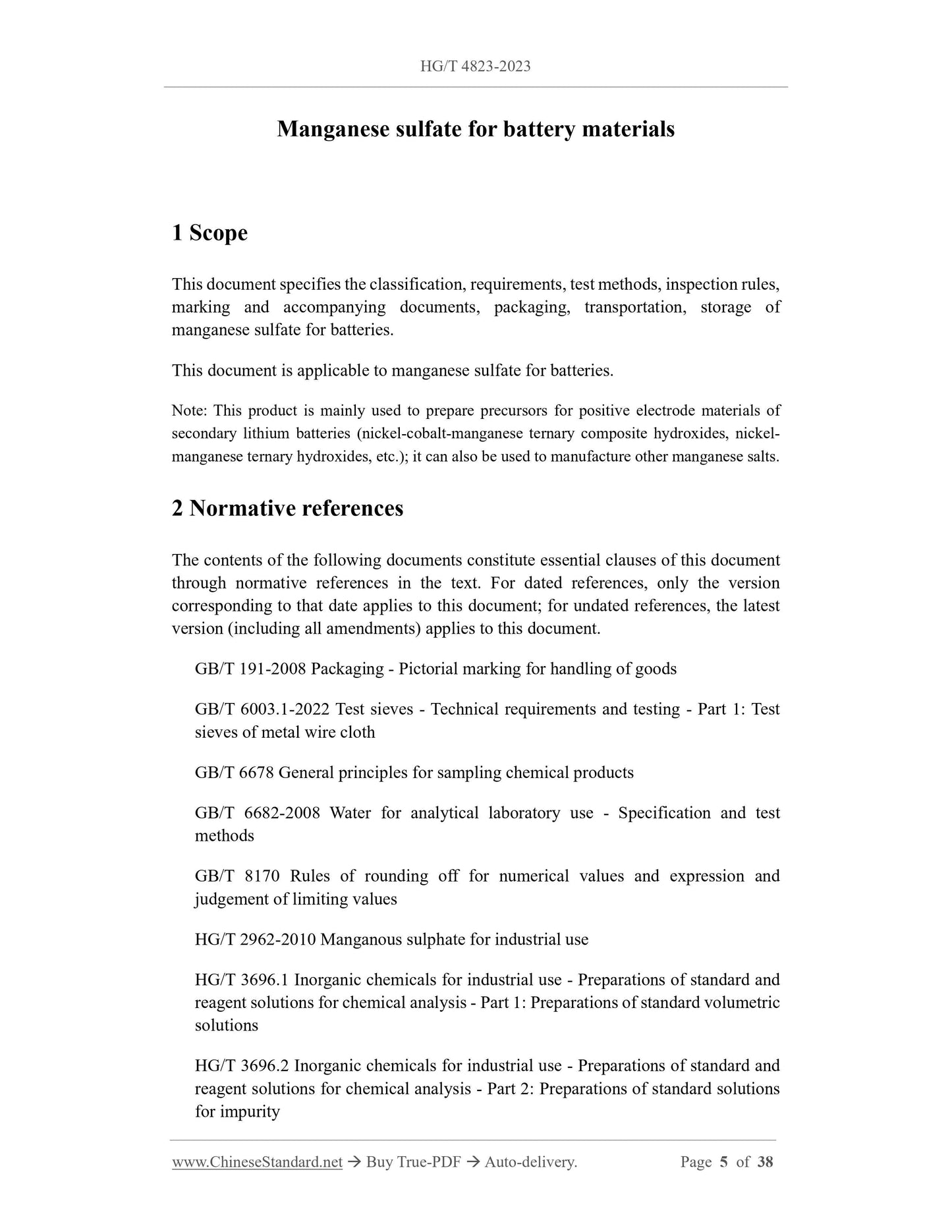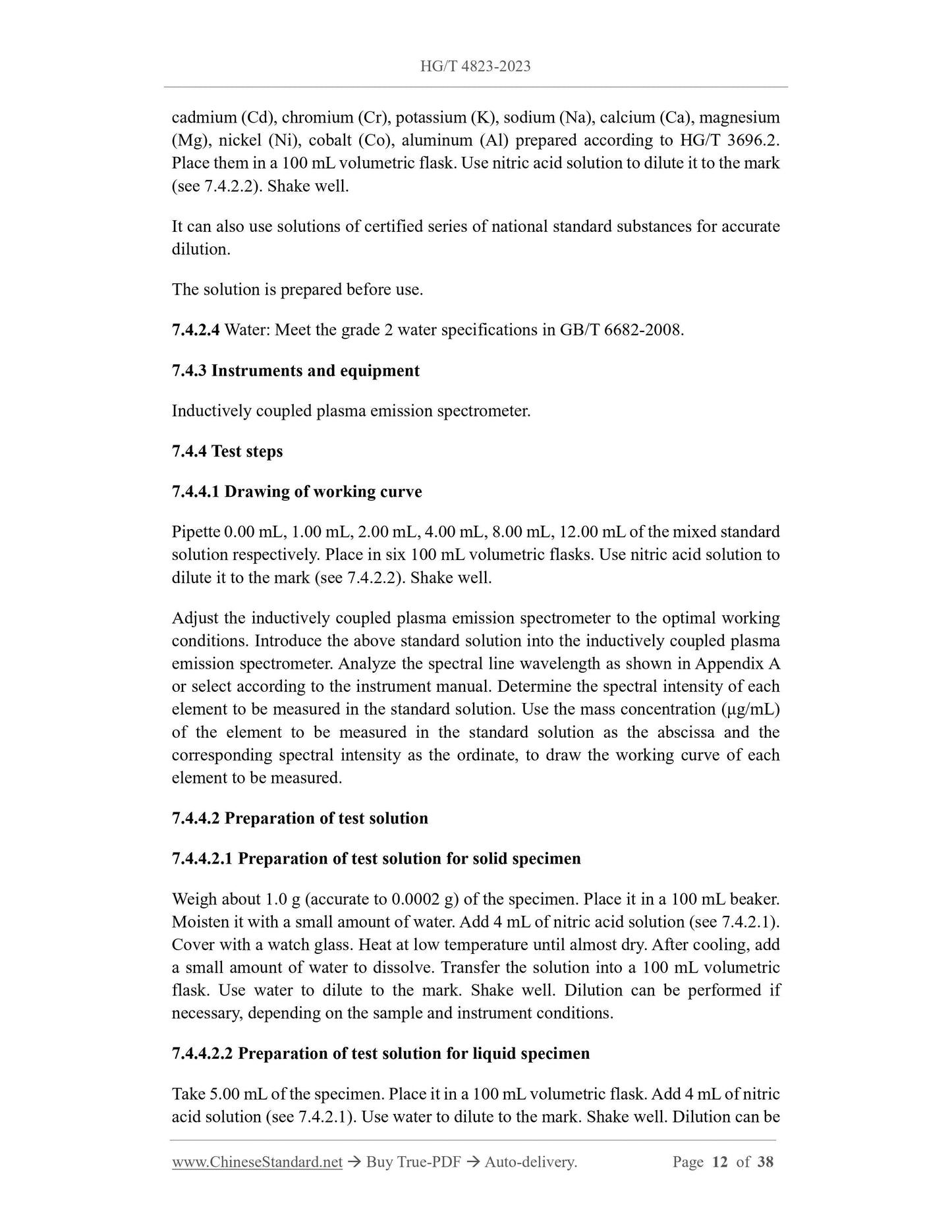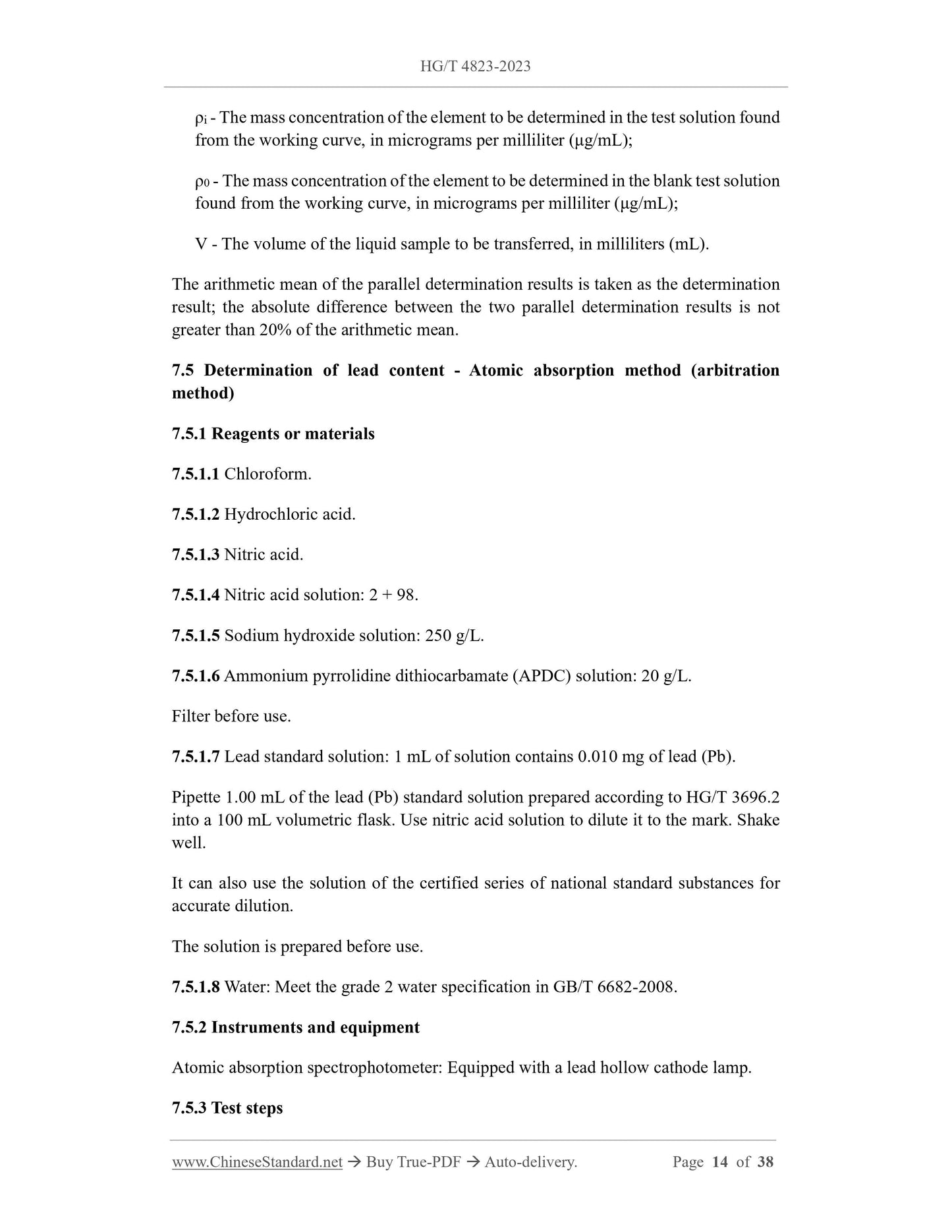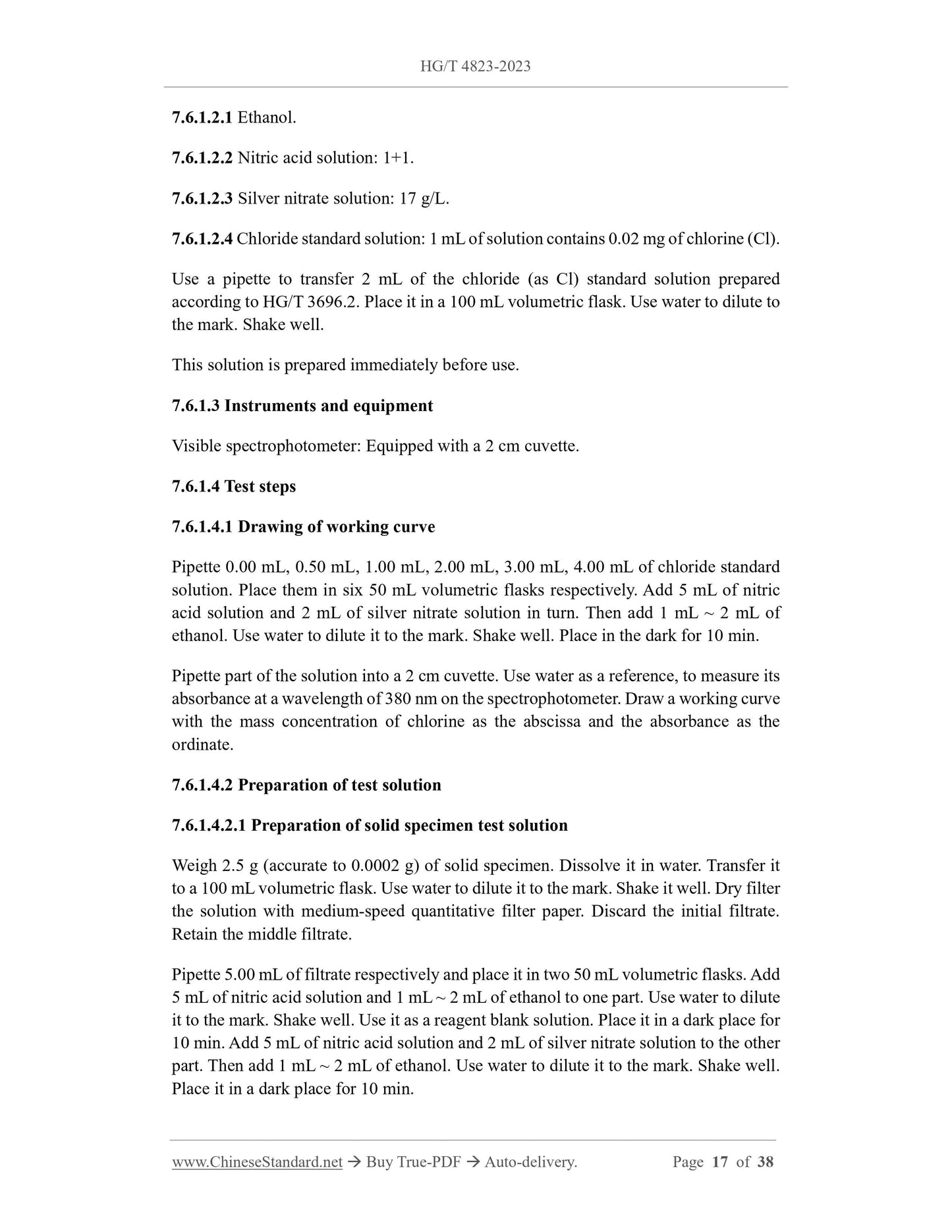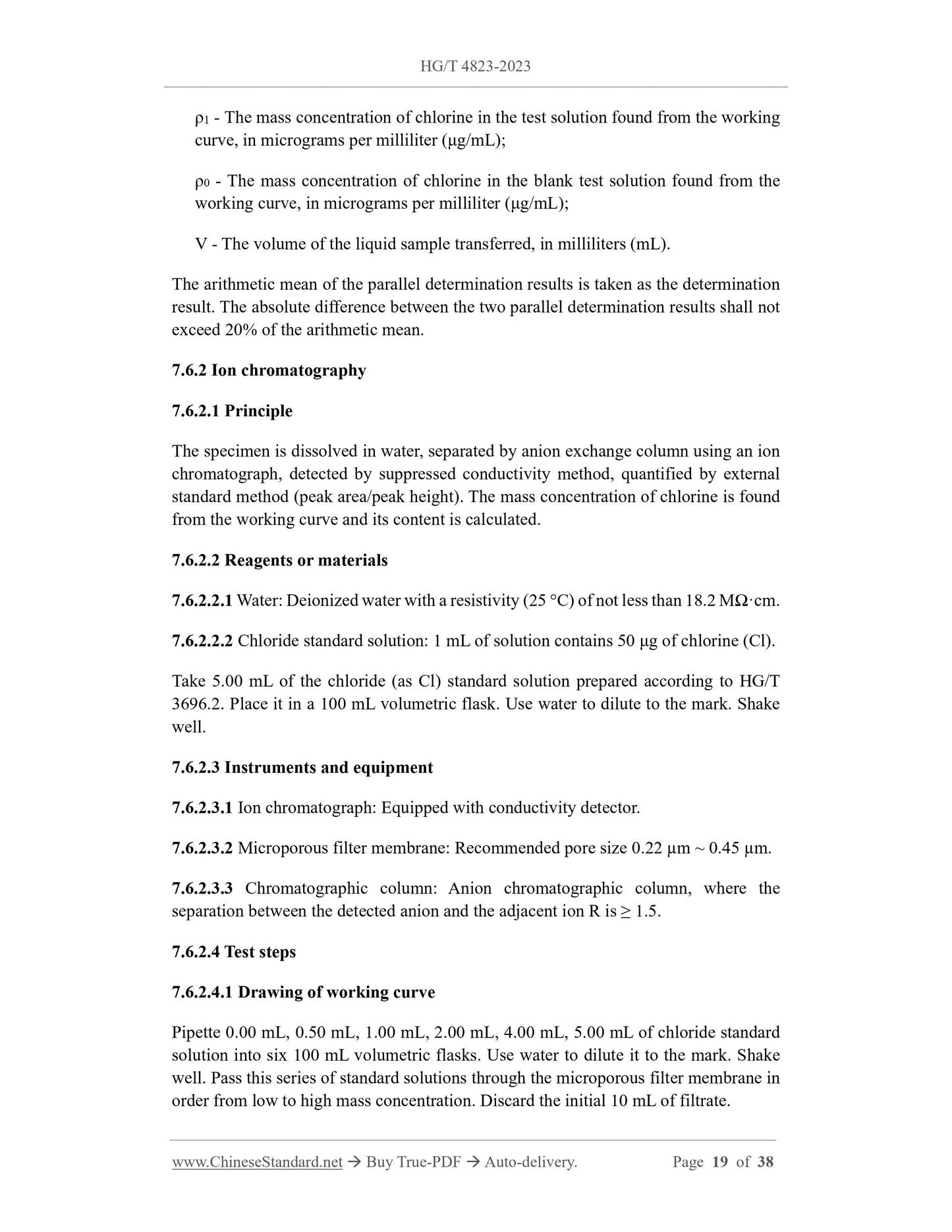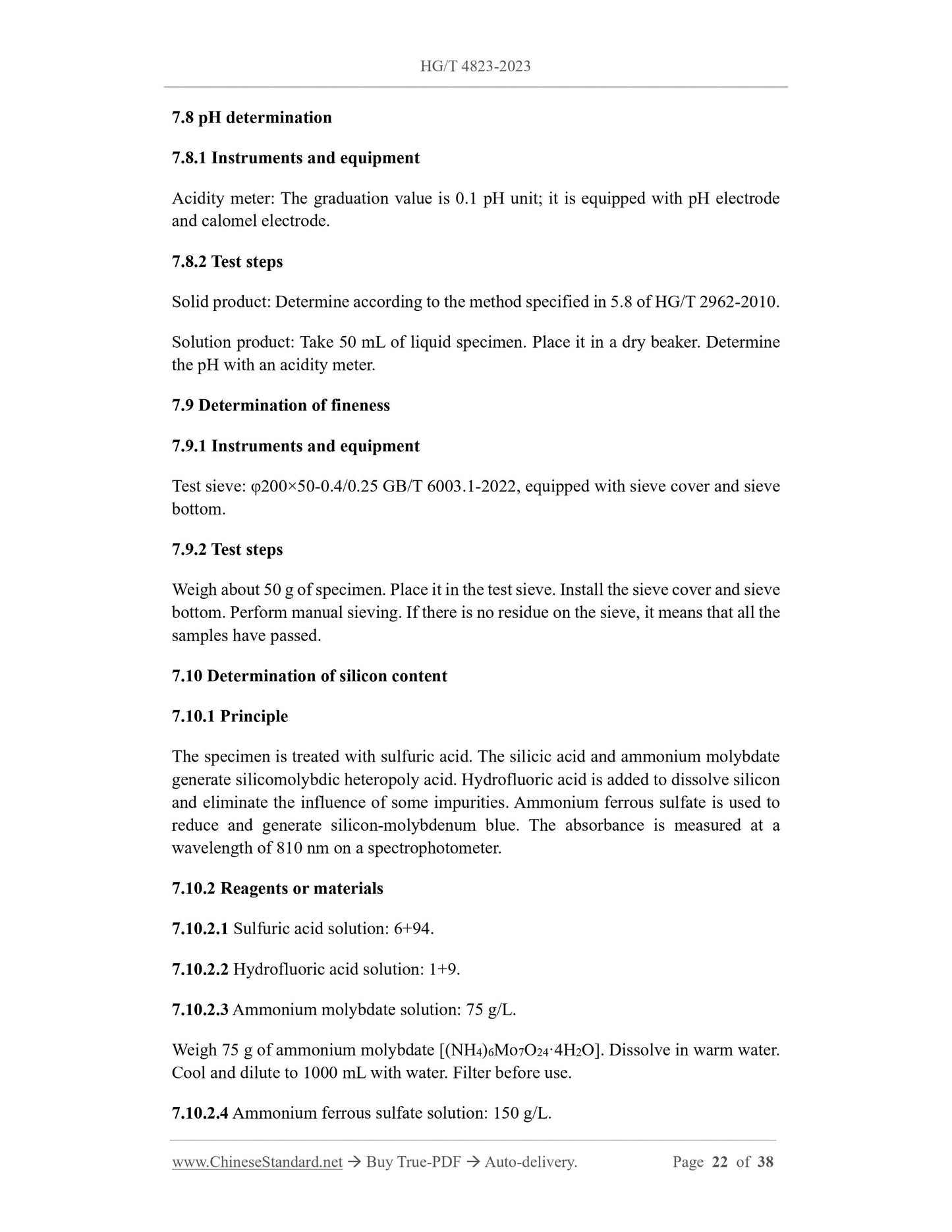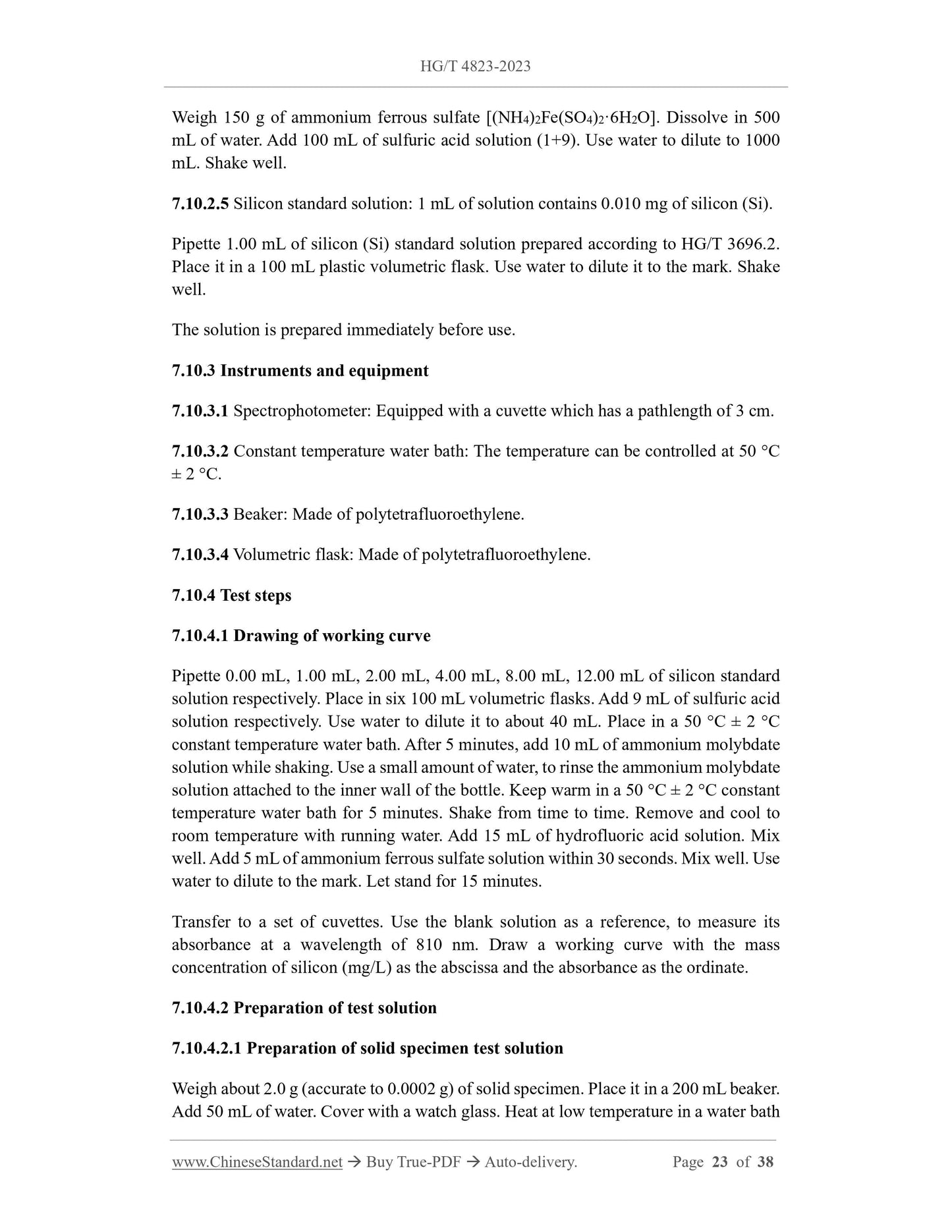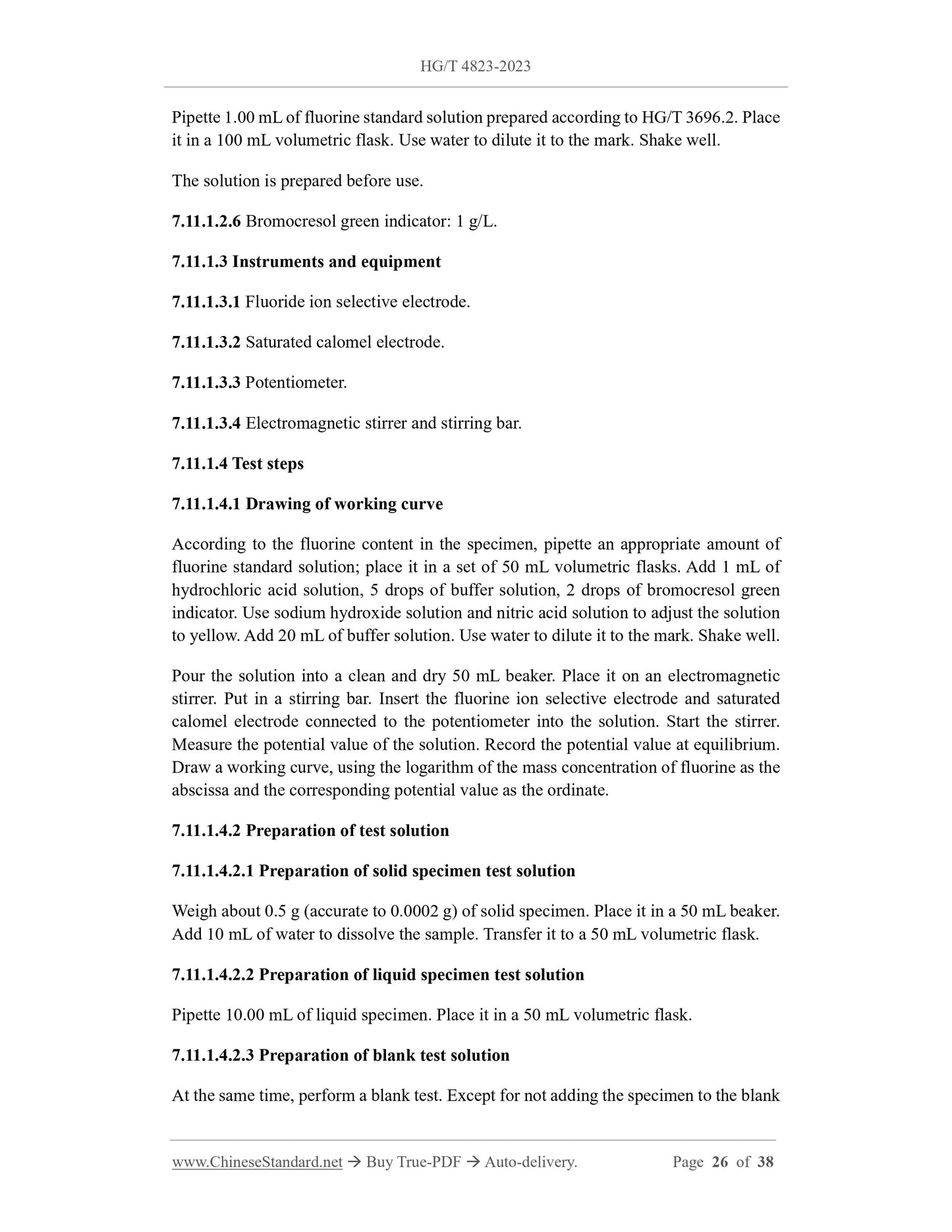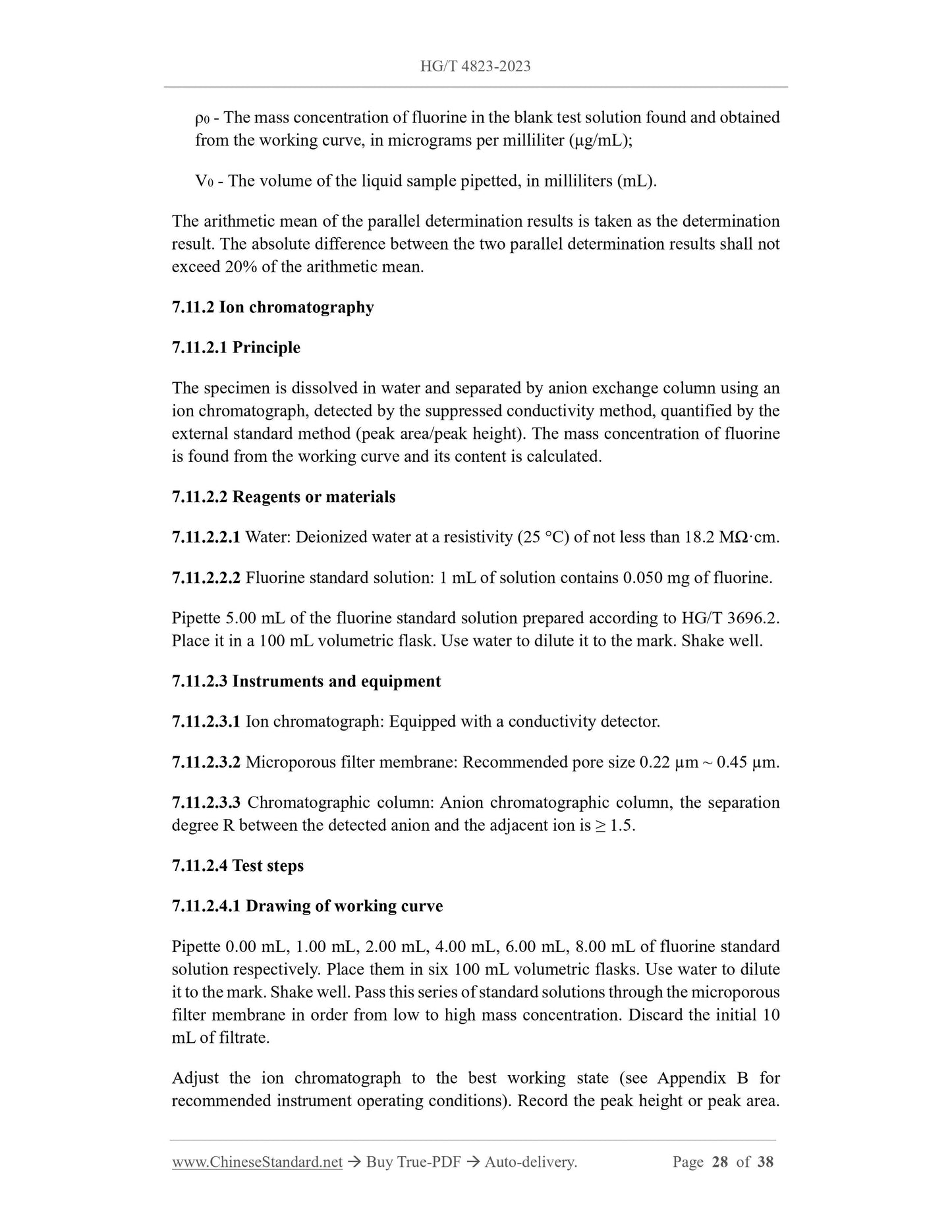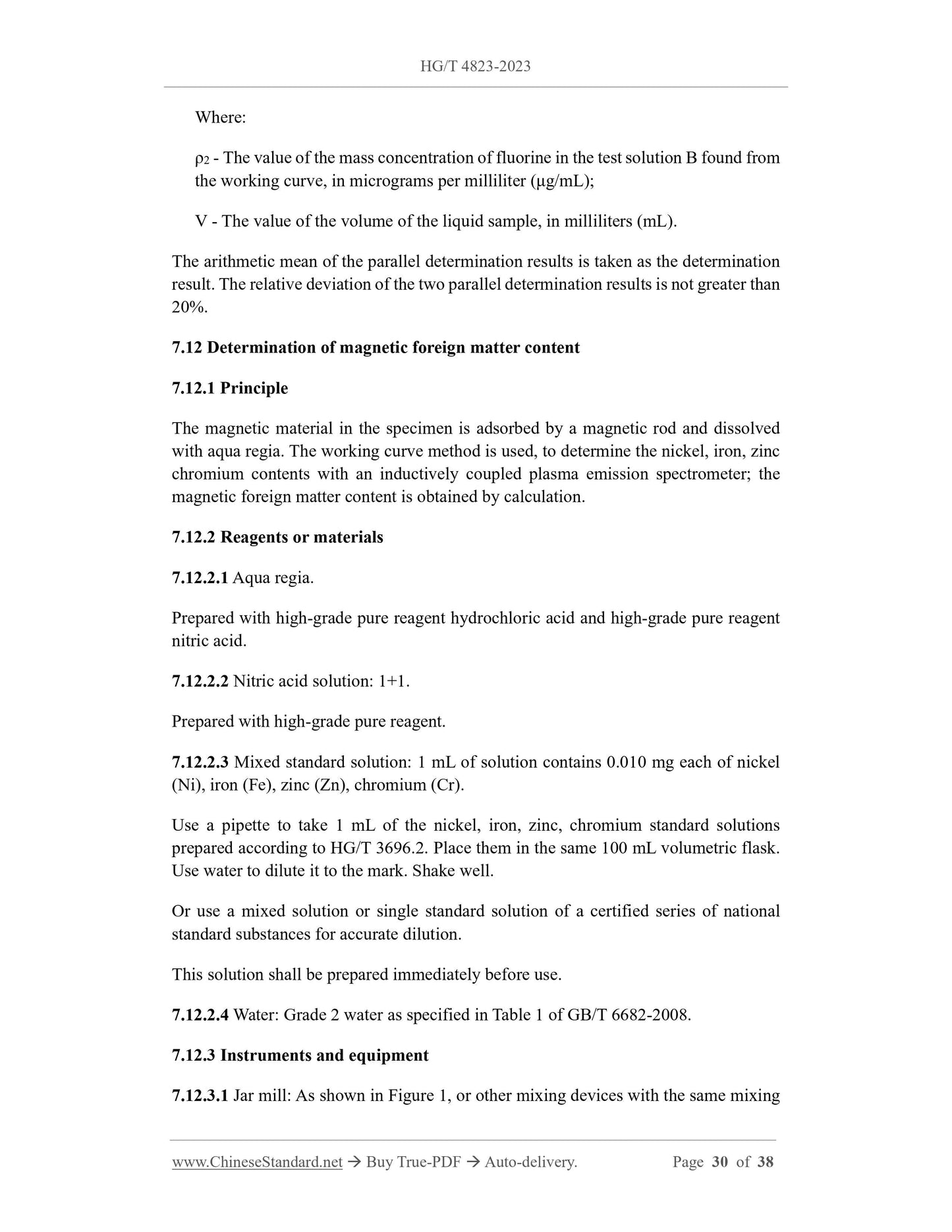1
/
of
12
www.ChineseStandard.us -- Field Test Asia Pte. Ltd.
HG/T 4823-2023 English PDF (HG/T4823-2023)
HG/T 4823-2023 English PDF (HG/T4823-2023)
Regular price
$460.00
Regular price
Sale price
$460.00
Unit price
/
per
Shipping calculated at checkout.
Couldn't load pickup availability
HG/T 4823-2023: Manganese sulfate for battery materials
Delivery: 9 seconds. Download (and Email) true-PDF + Invoice.Get Quotation: Click HG/T 4823-2023 (Self-service in 1-minute)
Newer / historical versions: HG/T 4823-2023
Preview True-PDF
Scope
This document specifies the classification, requirements, test methods, inspection rules,marking and accompanying documents, packaging, transportation, storage of
manganese sulfate for batteries.
This document is applicable to manganese sulfate for batteries.
Note. This product is mainly used to prepare precursors for positive electrode materials of
secondary lithium batteries (nickel-cobalt-manganese ternary composite hydroxides, nickel-
manganese ternary hydroxides, etc.); it can also be used to manufacture other manganese salts.
Basic Data
| Standard ID | HG/T 4823-2023 (HG/T4823-2023) |
| Description (Translated English) | Manganese sulfate for battery materials |
| Sector / Industry | Chemical Industry Standard (Recommended) |
| Classification of Chinese Standard | G12 |
| Classification of International Standard | 71.060.50-�� |
| Word Count Estimation | 26,243 |
| Date of Issue | 2023-07-28 |
| Date of Implementation | 2024-02-01 |
| Older Standard (superseded by this standard) | HG/T 4823-2015 |
| Issuing agency(ies) | Ministry of Industry and Information Technology |
| Summary | This standard specifies the classification, requirements, test methods, inspection rules, marking and accompanying documents, packaging, transportation and storage of manganese sulfate for batteries. This standard applies to manganese sulfate for batteries. Note: This product is mainly used to prepare secondary lithium battery cathode material precursors (nickel-cobalt-manganese three-element composite hydroxide, nickel-manganese two-element hydroxide, etc.), and can also be used to make other manganese salts. |
Share
